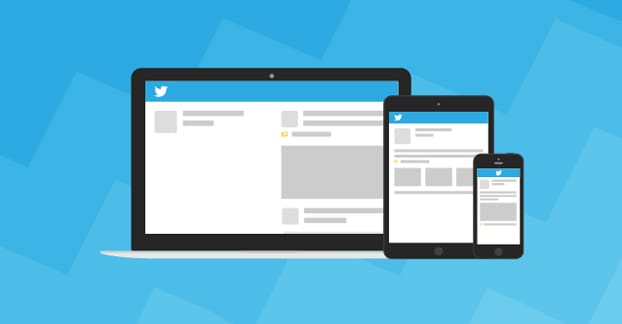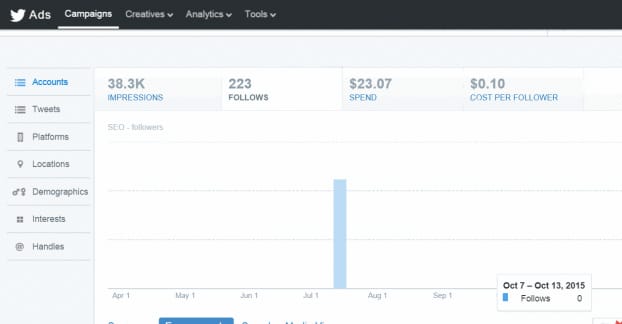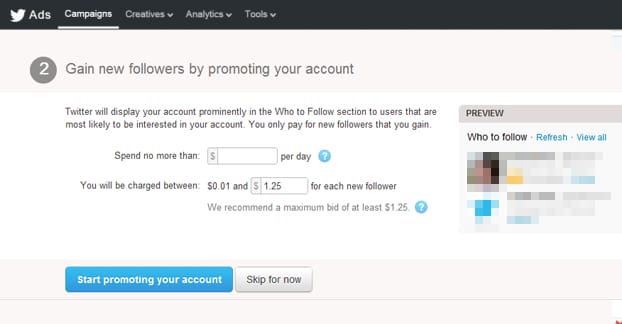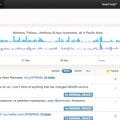If you asked me a few years ago if I thought Twitter ads were worth the money, I might have told you no. I might have thought about it for a bit, but at the end of the day, they had too little in the way of targeting and too much in the way of price. These days, though, the tides have shifted, and Twitter has been making quite a few improvements to their system. I would say, today, that Twitter ads are definitely worth the money, with two caveats.
The first caveat is that you must learn how to use them properly. As with any advertising system, you can save time and money by learning how they all work and putting them into action with a firm strategy in mind. If you’re just throwing ideas to the wall you’re likely to burn through your budget with little or nothing to show for it.
The second caveat is that you’re using Facebook ads as well. While Facebook ads are not a replacement for Twitter ads, Twitter ads are firmly second place to Facebook ads. If you have a limited budget, spend it on Facebook first and foremost, unless you have a very compelling reason why you should skip Facebook and go right to Twitter. Such reasons include “Facebook banned me” more than most other reasons.
Picking Your Twitter Ad Type
Twitter ads come in a variety of different formats. When you have the goal of gaining followers, you might think that only the “Build an Audience” campaign type is available, but you have to think outside the box sometimes. Referring people to your site exposes them to your content, which may be more engrossing and more valuable than your tweets. The people who visit and stay fans of yours will likely follow you on Twitter, but those who follow you on Twitter first might not ever click a link.
That’s two types of campaigns, but there are also two more. One is designed for getting more engagement on your posts, and frankly it’s probably the least useful of all of them. The reason for that is that individual engagements are not themselves all that valuable. A retweet, a like, a reply; these are unreliable indicators of actual engagement with your brand. Replies are better than the others, but clicks and conversions are still the real meat of the issue.
The final type of campaign is promoting a mobile app. Over 80% of Twitter’s users are mobile users, so it’s generally a good idea to promote a mobile app over Twitter if you have one. That’s the key, though; you have to have a mobile app worth promoting. If you don’t, there’s no real reason to bother with this type of advertising.
Ads also come in three forms of promotion. You can promote trends, accounts, or individual tweets. Promoting trends is good for getting people talking about you, but it’s not as good for followers. Promoting accounts makes your account show up in the “who to follow” boxes floating around Twitter, but in my experience those are largely ignored. People follow accounts because of the content they post, so you’re going to want to go for promoting tweets themselves.
Twitter Ad Targeting
So what about targeting? Facebook ads are the gold standard of targeting options, and no one has reached that pinnacle, largely because no one else has been able to harvest that much personal information about people without collapsing as a site.
I’m not going to go into great detail about targeting options here, but I will say one thing; Twitter has improved dramatically over the last few years. In 2010 or 2012 you were limited quite a bit in the way you were able to target your audience. These days, you have much more granular control. You can target people based on geography, on gender, on content, and even on time-sensitive events.
Targeting will affect how many people can see your ads, as well as how much they cost you to run. We’ve all heard stories about overly expensive ads or budgets being drained in days, but that’s generally the result of not putting in targeting options. If you tell Twitter to share your ad with everyone on Twitter, of course they’re going to try, and drain every penny you put available in the process.
Costs
Speaking of the costs of your ads, what can you expect to be paying? It will depend on the type of ad you’re running. For example, a campaign for app installs will only charge you when a user actually installs the app. If they simply like your tweet or follow your account, that’s free engagement.
For ads that are aimed at getting you new followers, any action other than a new follow is free. You can pay for new followers for months and get a ton of likes and replies, but if no one follows you, you don’t pay for the exposure. You might think this is an interesting workaround, but you can’t really control what kind of actions your audience takes, so plenty of them will probably follow you anyways.
From various posts around the web and from my own experiences, you can estimate the cost of a new follower – using a well targeted campaign and high quality content as a seed – to be pretty low. I’ve seen anywhere from 10 cents to $2 per follower. Generally, if you are really good at producing your content, you’re going to be on the lower end of that scale, under 50 cents per follower.
I said that engagement and non-follower actions are free, but that’s not necessarily true. Your costs will scale the more views you get without a follow. If 100 people see your ad and 1 of them follows you, that’s a 1% follow rate and your costs are going to be relatively low. If 1000 people see your ad and only 1 follows you, that’s a .1% follow rate and your costs will be higher. The more follows you get out of your audience, the cheaper each individual follower is going to be.
Finding Success
So, in order to succeed with Twitter ads and get followers for a reasonable cost, you need to do just about everything right. That means the right kind of content, the right kind of targeting, and the right budget.
Budget is easy, though it depends on your business and what you’re able to spend. Simply determine what sort of a maximum cost you’re willing to spend on your new followers and set that as your per-follower limit. I like to set it at about 50 cents as a baseline. That will cut off your ads if the cost per follower gets to high, which is an indication of something being wrong.
As for targeting, you want to be as specific as possible. You can target based on geographic location, so at the very least you want to limit your ads to your country of origin. If possible, narrow it down even more, to the state or metro area you’re operating within. Generally, the more specific you can be, the better. Unfortunately, most brands that aren’t small local businesses will have trouble with this.
- Musicians advertising themselves around a show should target the location of the show for a few days prior and after the show, to capture followers from their audience.
- A small local business should target their county, city, or postal code to have a narrow audience of potential customers following them.
Gender targeting can help you if your product is specifically gendered, or your content is relevant to a specific gender, but it’s not necessary for every ad. Device and platform tend to be less necessary, again, unless you’re advertising something specific to that carrier or device. Someone advertising an alternative to the iPhone might explicitly target iPhone users, for example.
You can do time-sensitive event targeting as I mentioned up above, or you can target based on interests. Interest targeting on Twitter is pretty interesting, since you don’t have a convenient set of liked pages to derive interests from the way Facebook does it. Instead, Twitter derives interest information based on the accounts you follow. If someone follows IGN, Kotaku, and PCGamer, they’re probably fans of video games. If they follow Ke$ha, Drake, and Halsey, they’re fans of music. If they follow accounts for players in the Yankees, they’re fans of the Yankees. You can combine this with event targeting to reach fans of one side of a game while that game is running, for example.
It’s pretty easy to set up your targeting in the process of setting up your ad. Twitter’s new ad manager is much more complex than it used to be, but it’s still intuitive and walks you through each step of the process. Just don’t forget to expand a few of those extra options to further refine your audience and get the best value out of it you can.
Content
The other part of a successful ad is content. You’re not going to be promoting your account as a whole, you’re going to be promoting a single tweet. However, in both cases, people are going to click through to see your account feed before they decide if they want to follow you. This means you want to show them your most recent dozen or so tweets, and they should all be valuable. You can’t slack off just because the ad tweets are getting all of the incoming visibility.
The first thing to keep in mind is that you want to ignore many of Twitter’s best practices. Twitter recommends that you add “follow us” in your tweet, that you tell the user why they should follow you, and that you should avoid hashtags and links. All of this is bad advice.
Think about it; when was the last time you followed someone because they asked for it? It’s pretty rare, right? I almost never follow someone just because they said to follow them, and it’s usually a strike against them. I follow people because they post content I want to see, and I’ve seen them doing so several times.
Hashtags you can take or leave. I like to include one in my ads because it makes the user more likely to recognize the tweet as something more organic. If your tweet looks too much like something focus-grouped into being acceptable to your audience, that audience is probably going to reject it for being too bland. Hashtags spice things up. Just don’t go crazy and include five or six tags; one will be enough.
As for a link, well, we’re getting to the actual content of the tweet now. People like value. I can’t stress this enough; people live for value. Your tweet should almost always include a link, something that’s going to attract users to check out your site. From there, they can see what kind of content you post, and they can go back to Twitter to see what kind of tweets they post. When they see your content, and it resonates with them, they’re more likely to follow.
One thing you can do is make sure your website has a retargeting tag on it. When a user sees your promoted tweet and clicks on it, they’ll visit your site. This adds them to the list of people who have visited but who have not followed you. If they then follow you, they are removed from that list. Since you want followers, you can then target this smaller list of people with subsequent ads. Many of them might have liked your content but not thought to follow you. A reminder, in the form of another paid ad, can get them to make that leap.
This doesn’t even double your costs. If the user didn’t follow you before, they didn’t cost you extra money, beyond what the lower follow rate does. It’s a great way to hook people who took the bait but didn’t bite the first time around.








